|
|
 |
| 0 przedmiotów |
 |
|
|
|
|
|
|
 |
Wysyłka Pocztex Ekspres 24
• Kurier Pocztex: 10 zł
• Kurier Pocztex + pobranie: 15 zł
Wysyłka kurierem
• Kurier UPS: 25 zł
• Kurier UPS + pobranie: 30 zł
|
 |
|
|
|
|
|
|
|
|
|
|
|
|
|
|
|
|
|
| |
|
|
 |
Klienci, którzy kupili ten produkt byli zainteresowani także tymi produktami: |
 |

Pipeta Pasteura 2,0 ml z PS komplet 5 sztuk
2 zł |
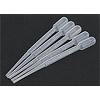
Pipeta Pasteura 3,0 ml z PS komplet 5 sztuk
2 zł |

Szkiełko zegarkowe fi = 60 mm (SKU: 06-513.202060)
4 zł |

Kontakt IPA 50 ml (izopropanol, alkohol izopropylowy, buteleczka)
5 zł |

Szkiełko zegarkowe fi = 50 mm (Chemland; 06-513.202050)
5 zł |

Mikrofibra do czyszczenia optyki 18x15 cm z mapą nieba
5 zł |

Okulary z folią ND5 do obserwacji zaćmienia Słońca (Focus Solar Eclipse Glasses, SKU: 116175)
8,50 zł |

Półkule północzne nieba i Ziemi - reprodukcja mapy Hondiusa z 1661 roku (50 x 44,5 cm)
9 zł |
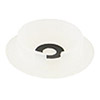
Nakładka kolimacyjna - dekielek na wyciąg 1,25" z dziurką (GSO, BB009)
9 zł |

Alkohol izopropylowy (IPA) - czyszczenie optyki 60 ml
9 zł |

Śruba 1/4" foto długości 13 mm (Artesky, SKU: ARTPF13)
9 zł |

Osłona na okular 1,25" od strony optyki (GSO; SKU: BB087)
9 zł |

Mikrofibra do czyszczenia optyki 17x12 cm biała z logo teleskopy.pl
9 zł |

Śruba 1/4" foto długości 16 mm (Artesky, SKU: ARTPF16)
9 zł |

Podkładka pod myszkę i mikrofibra (2 w 1) z mapą nieba
9 zł |

Nolin 1755 mapa świata - reprint
9 zł |

InPost - dopłata do wysyłki do Paczkomatu InPost
10 zł |

Mapa Księżyca obserwacyjna fi=30 cm wodoodporna
10 zł |

Mikrofibra do czyszczenia optyki 30x30 cm z mapą Księżyca
15 zł |

Szkiełka mikroskopowe podstawowe szlifowane z zielonym polem do opisu (50 sztuk; SKU: 04-296.202.21)
15 zł |
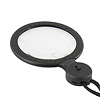
Lupa na szyję Levenhuk Zeno Vizor N1 4x / 10x (SKU: 69674)
15 zł |
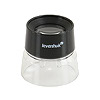
Lupa 10x typu jubilerskiego - Levenhuk Zeno Gem M1 (SKU: 70434)
15 zł |

Olejek immersyjny 10 ml (Merck / Sigma Aldrich)
15 zł |
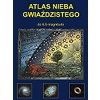
Atlas nieba gwiaździstego do 6,5 magnitudo wraz z kartami Messiera i Caldwella
15 zł |

Obrotowa mapa nieba najdokładniejsza fi=30 cm wodoodporna
15 zł |
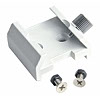
Stopka do mocowania szukacza do tubusu teleskopu (kolor: biały; standard mocowania: Vixen, producent: Sky-Watcher)
19 zł |

Adapter samochodowy do ładowarek Fenix ARW10
19 zł |

Lupa Levenhuk Zeno HANDY ZH31 4x65 (SKU: 74058)
19 zł |

Stopka do mocowania szukacza do tubusu teleskopu (kolor: czarny; standard mocowania: Vixen, producent: Sky-Watcher)
19 zł |

Alkohol izopropylowy (IPA) - czyszczenie optyki 500 ml ze spryskiwaczem (izopropanol)
19 zł |

Szybkozłączka do statywu Camrock TH70 TH-70 (SKU: CR1719)
19 zł |

Alkohol izopropylowy (IPA) - czyszczenie optyki 300 ml
19 zł |

Kosmos - jak to działa? - Przemysław Rudź, wyd. SBM, twarda oprawa
19 zł |
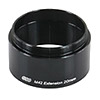
Pierścień dystansowy M42 Spacers extension ring 20 mm (extender, przedłużka T2-T2; GSO FF271)
25 zł |

Alkohol izopropylowy (IPA) - czyszczenie optyki 1000 ml w metalowym kanistrze
25 zł |

Pierścień dystansowy M42 Spacers extension ring 5 mm (extender, przedłużka T2-T2; GSO FF269)
25 zł |
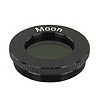
Filtr księżycowy GSO Moon 1,25 cala (AD068)
25 zł |
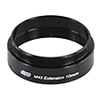
Pierścień dystansowy M42 Spacers extension ring 10 mm (extender, przedłużka T2-T2; GSO FF270)
25 zł |

Lenspen Photo Hurricane Blower gruszka fotograficzna (SKU: HB-1)
29 zł |

Lupa Levenhuk Handy ZH19 5x60 (SKU: 74053)
29 zł |

Jaka to gwiazda? Atlas dla dzieci wyd. SBM (edycja 2022)
25 zł |
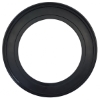
Oprawa N-130 - plastikowy adapter do zamocowania folii filtru słonecznego - rozmiar do teleskopów Newtona 5" / 130 mm (fabryka: Synta, m.in. Sky-Watcher) (SKU: SW-6102)
35 zł |

Oprawa N-150- plastikowy adapter do zamocowania folii filtru słonecznego - rozmiar do teleskopów Newtona 6" / 150 mm / 152 mm (fabryka: Synta, m.in. Sky-Watcher) (SKU: SW-6103)
35 zł |
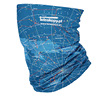
Astronomiczna chusta komin (z mapą nieba)
35 zł |

Oprawa R-102 - plastikowy adapter do zamocowania folii filtru słonecznego - rozmiar refraktorów AR-102 mm oraz ED 80/600 (fabryka: Synta, m.in. Sky-Watcher)
35 zł |

Baader Optical Wonder Cloth - mikrofaza do czyszczenia optyki (SKU: 2905000)
35 zł |

Obrotowa mapa nieba fi=30cm + Atlas nieba gwiaździstego do 6,5 mag (ZESTAW PROMOCYJNY)
30 zł |

Adapter do smartfonów Redleaf SOM-2 (SKU: RL2427)
39 zł |

Filtr GSO 1,25" #8 jasnożółty (AD057)
39 zł |
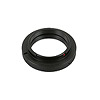
Pierścień T2 (M42x0,75) / Pentax K (do lustrzanek Pentax K)
39 zł |
|
|
[AASKOLIMATOR_GSO]
|
|



